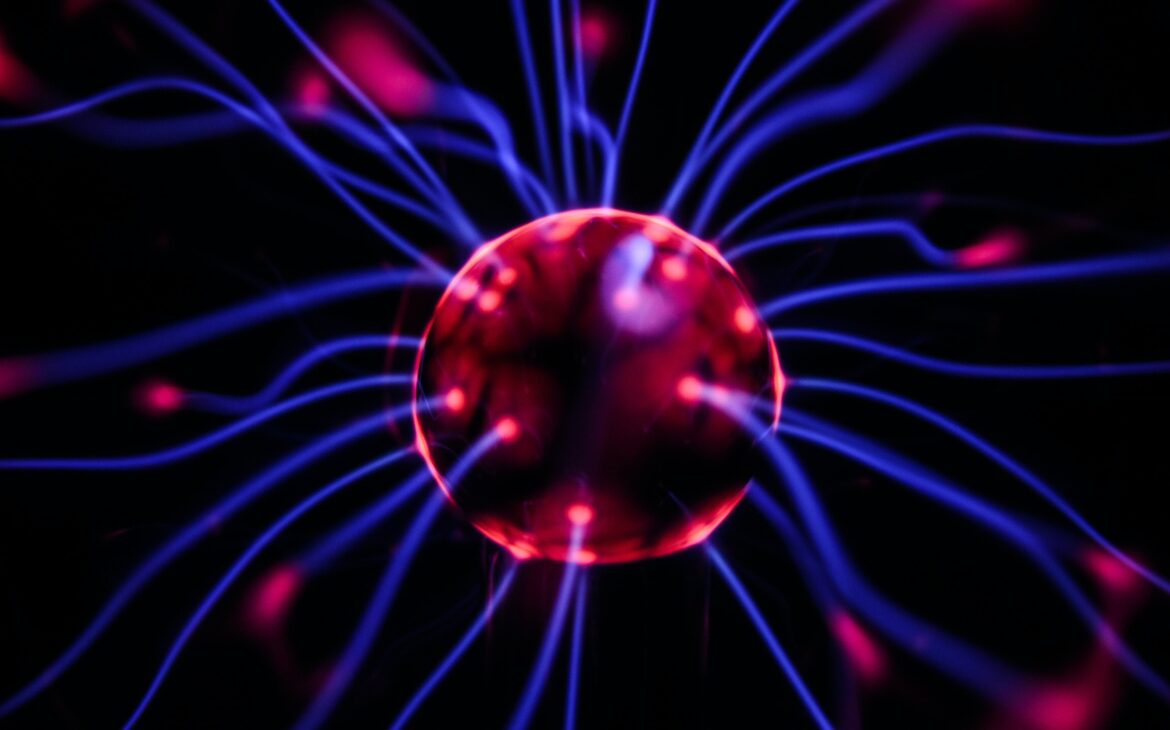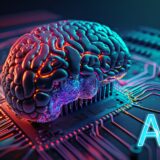Breaking Barriers in Brain Research: Harnessing the Potential of Neural Link
The field of brain research has long been fascinated with unravelling the mysteries of the human brain, seeking to understand its complexities and harness its immense potential. Traditional methods of studying the brain have provided valuable insights, but they have inherent limitations. However, with the advent of Neural Link technology, a revolutionary breakthrough has emerged, offering unprecedented opportunities to delve deeper into the workings of the brain. Neural Link holds the promise of connecting the human brain with advanced technology, breaking barriers and unlocking new frontiers in neuroscience. This article explores the potential of Neural Link, its advancements, applications, ethical considerations, and the transformative implications it holds for our understanding of the brain and its limitless possibilities.
1. Introduction: The Promise of Neural Link Technology
Breaking Barriers in Brain Research: Harnessing the Potential of Neural Link
Welcome to the future of brain research! For centuries, scientists have been fascinated by the complexities of the human brain. However traditional methods of studying the brain have had their limitations, leaving many mysteries unsolved. Enter Neural Link, a revolutionary breakthrough that promises to take brain research to unprecedented heights.
Understanding the Limitations of Traditional Brain Research
Traditional brain research has largely relied on indirect measures to understand the inner workings of our minds. Techniques like EEG (electroencephalography) and fMRI (functional magnetic resonance imaging) have given us valuable insights, but they can only capture a fraction of the brain’s complexity. It’s like trying to understand the intricacies of a symphony by listening to a single note. We need something more.
Introducing Neural Link: A Revolutionary Breakthrough
Neural Link, developed by visionary entrepreneur Elon Musk and his team, aims to bridge the gap between technology and the brain. It’s like plugging directly into the mind’s control panel, unlocking a wealth of information and possibilities. With Neural Link, we can potentially understand the brain in ways we never thought possible. It’s a game-changer for neuroscience and holds immense promise for medical advancements, enhanced communication, and even augmenting our cognitive abilities.
2. Understanding the Brain: Unraveling Its Complexities
To appreciate the significance of Neural Link, let’s dive into the intricacies of the brain and the challenges researchers face in exploring its mysteries.
The Intricate Network of Neurons
The brain is composed of billions of neurons, the building blocks of our thoughts, emotions, and behaviours. These neurons communicate through electrical and chemical signals, forming a complex network that governs our every move. Understanding how these connections work and influence our experiences is crucial to unravelling the mysteries of the mind.
Mapping Brain Activity: From Macro to Micro Scale
Researchers have made great strides in mapping the brain activity, from studying large-scale brain regions involved in specific functions to observing individual neurons firing in real-time. However, there is still much to explore in the middle ground—the mesoscale connectivity and dynamics that link the micro and macro levels. Neural Link may help us fill in this missing piece of the puzzle.
Unexplored Frontiers: The Mysteries of Consciousness
Consciousness, our subjective awareness, remains one of the greatest enigmas in science. How does our brain generate this profound experience? Neural Link has the potential to shed light on this mystery by allowing us to observe and manipulate brain activity with unprecedented precision. Imagine the possibilities of deciphering the neural correlates of consciousness and paving the way for a deeper understanding of our very existence.
3. Neural Link: A Revolutionary Breakthrough in Brain Research
Now, let’s delve into the concept and development of Neural Link, and how it aims to transform brain research as we know it.
The Concept and Development of Neural Link
Neural Link is a brain-machine interface that aims to create a seamless connection between the human brain and technology. The concept revolves around implanting tiny, flexible threads into the brain, which can detect and stimulate neural activity with high precision. These threads are connected to a small device, the “Link,” implanted behind the ear, which wirelessly communicates with external devices.
How Neural Link Connects the Brain and Technology
By establishing a direct link between the brain and technology, Neural Link opens up new possibilities. It allows us to record and interpret brain signals with unparalleled accuracy, providing insights into neural activity and its relationship to cognition and behaviour. Moreover, Neural Link holds potential for therapeutic applications, such as restoring lost sensory functions or treating neurological conditions by precisely modulating neural circuits.
4. Advancements in Neural Link Technology: Breaking Barriers
Neural Link is not just a concept; it’s an evolving technology with exciting advancements. Let’s explore some of the breakthroughs that Neural Link brings to the table.
Enhancing Brain-Machine Interfaces through Neural Link
Neural Link pushes the boundaries of brain-machine interfaces (BMIs), allowing for more precise and robust control of external devices using our thoughts alone. From prosthetic limbs that can be operated seamlessly to exoskeletons that enable paralyzed individuals to walk, Neural Link has the potential to enhance the quality of life for people with motor impairments.
Overcoming Challenges: Increasing Speed and Accuracy
One of the challenges in brain research is the time lag between recording brain signals and the resulting actions. Neural Link aims to overcome this barrier by enabling faster and more accurate decoding of neural signals, leading to real-time interactions with technology. The potential applications are far-reaching, from responsive brain-controlled systems to immersive virtual reality experiences.
Real-Time Feedback and Adaptive Learning
Neural Link’s ability to provide real-time feedback from the brain opens up exciting opportunities for adaptive learning. Imagine a world where our brain activity can be monitored and optimized to enhance learning, and memory retention, or even tailor personalized treatments for mental health disorders. Neural Link could pave the way for a future where our brains become active participants in our well-being and development.
In conclusion, Neural Link is breaking barriers in brain research, revolutionizing our understanding of the brain’s complexities, and offering unprecedented possibilities for medical advancements and human augmentation. With its continued development, we are entering a new era where the boundaries between technology and the mind blur, and the potential for human advancement becomes limitless.
5. Applications of Neural Link: Unlocking New Opportunities in Medicine
Revolutionizing Diagnosis and Treatment of Neurological Disorders
The potential applications of Neural Link in medicine are nothing short of mind-blowing (pun intended). By harnessing the power of brain-machine interfaces, Neural Link can revolutionize the way we diagnose and treat neurological disorders. Imagine a world where your doctor can directly tap into your brain to understand the underlying causes of conditions like Alzheimer’s or Parkinson’s disease. Neural Link has the potential to provide unprecedented insights into the inner workings of the brain, leading to more accurate diagnoses and personalized treatments.
Restoring Mobility and Sensory Functions through Neural Link
For individuals living with paralysis or sensory impairments, Neural Link offers a glimmer of hope. By establishing a direct connection between the brain and external devices, it becomes possible to restore mobility and sensory functions that were once lost. Imagine someone with a spinal cord injury being able to walk again, or a blind person regaining their sight through Neural Link technology. These possibilities are not just the stuff of science fiction; they have the potential to become a reality, thanks to the advancements in brain research.
Augmenting Cognitive Abilities: The Potential for Brain Enhancement
Neural Link has the power to augment cognitive abilities, taking human intelligence to new heights. While the idea of enhancing our brains might sound like a plot from a superhero movie, the reality is that scientists are already exploring ways to improve memory, learning, and problem-solving through Neural Link technology. Imagine being able to download information directly to your brain, making exams a breeze or amplifying your creative thinking. The possibilities are both exciting and, admittedly, a little scary.

6. Ethical Considerations in Neural Link Research
Ensuring Privacy and Data Security
As Neural Link technology progresses, it is crucial to address the ethical concerns surrounding privacy and data security. When the mind becomes interconnected with external devices, who has access to this information, and how it is protected becomes a paramount concern. Ensuring robust encryption, strict data access controls, and transparent data handling practices will be essential to safeguarding individuals’ privacy and preventing potential misuse of their brain data.
Addressing Potential Ethical Concerns and Misuse
Any groundbreaking technology comes with ethical challenges, and Neural Link is no exception. It is essential to proactively address potential ethical concerns and mitigate the risk of misuse. Questions about cognitive manipulation, mind control, or creating an unfair advantage raise ethical dilemmas that must be carefully considered and regulated. By fostering open dialogues and involving multiple stakeholders, we can strive to develop responsible guidelines and frameworks to ensure Neural Link technology benefits society without exploitation.
Informed Consent and Regulatory Frameworks
Ethics and technology go hand in hand, and Neural Link research necessitates clear informed consent and robust regulatory frameworks. It is vital to ensure that individuals fully understand the risks and benefits of participating in research or receiving Neural Link implants. Balancing technological advancements with the protection of individuals’ rights requires comprehensive oversight, including ethical review boards, informed consent procedures, and periodic assessments of safety and efficacy.
7. Future Implications: Transforming the Way We Understand the Brain
Predicting Future Developments in Neural Link Technology
The future of Neural Link holds incredible promise. As technology advances, we can expect smaller, more efficient brain interfaces that seamlessly integrate with our daily lives. Imagine the possibility of wireless connections or even nanoscale devices that provide unprecedented access to the inner workings of our brains. While these advancements may seem far-fetched now, history has shown that human ingenuity knows no bounds, and the future of Neural Link technology is likely to exceed our wildest expectations.
The Impacts of Neural Link on Neuroscience and Brain Research
Neural Link technology has the potential to revolutionize neuroscience and brain research. With access to real-time brain activity and the ability to stimulate specific regions, researchers can unravel the complexities of the human brain like never before. This newfound understanding can not only lead to breakthroughs in treating neurological disorders but also shed light on fundamental questions about consciousness, cognition, and human behaviour. Neural Link technology may pave the way for entirely new approaches to studying the brain and push the boundaries of our understanding.
Shaping Future Societal and Ethical Discussions
The advent of Neural Link technology will undoubtedly spark societal and ethical debates. Conversations around brain privacy, cognitive enhancement, and the boundaries of human nature will become more prevalent. As a society, we must actively engage in these discussions, embracing the potential that Neural Link offers while also ensuring that it aligns with our shared values. By approaching these conversations with open minds and a healthy dose of humour, we can navigate the complex terrain of ethics and shape a future that truly harnesses the potential of Neural Link technology.
8. Embracing the Potential of Neural Link with Open Minds and Humor
Breaking Barriers and Embracing New Frontiers
With Neural Link technology, we stand at the precipice of a new era in brain research and human potential. It is a time to embrace the unknown, break barriers, and venture into uncharted territories. The promise of Neural Link lies not just in its potential applications but also in the curiosity and resilience of the human spirit to push beyond what we think is possible.
The Importance of Balancing Advancements with Ethical Considerations
As we embark on this exciting journey, it is crucial to remember the importance of balance. While Neural Link presents incredible possibilities, we must approach its development with critical consideration for the ethical implications. We must strive to strike a delicate equilibrium where progress aligns with respect for human rights, privacy, and the principles that make us who we are.
Embracing the Potential of Neural Link with Open Minds and Humor
Lastly, let us approach the potential of Neural Link with open minds and a healthy dose of humour. The path to unlocking the mysteries of the brain is bound to be filled with surprises, setbacks, and unexpected discoveries. By embracing the journey with a lighthearted spirit, we can navigate any challenges that arise and fully appreciate the wonders that Neural Link technology may bring. So, let’s embark on this adventure together and see where our minds can take us!
9. Conclusion
In conclusion, Neural Link technology represents a groundbreaking leap forward in brain research, offering immense possibilities for understanding and harnessing the power of the human brain. As advancements continue to push the boundaries of what is possible, we must also navigate the ethical considerations and ensure responsible development and implementation of this technology.
By embracing the potential of Neural Link, we can revolutionize medicine, restore lost functions, and enhance cognitive abilities, leading to a brighter future where we unlock the full potential of our most complex organ. The journey ahead may be challenging, but with careful exploration and responsible use, Neural Link technology has the potential to transform the way we understand the brain and pave the way for remarkable advancements in neuroscience.
FAQ
1. What is Neural Link technology?
Neural Link technology is a revolutionary breakthrough in brain research that aims to connect the human brain with advanced technology. It involves the development of interfaces that allow for bidirectional communication between the brain and external devices, enabling researchers to study and manipulate brain activity in unprecedented ways.
2. How does Neural Link technology benefit medicine?
Neural Link technology has the potential to revolutionize medicine in several ways. It can lead to improved diagnosis and treatment of neurological disorders by providing real-time insights into brain activity. Neural Link interfaces can also restore mobility and sensory functions for individuals with disabilities. Additionally, Neural Link holds promise for augmenting cognitive abilities, opening up possibilities for brain enhancement and cognitive rehabilitation.
3. What are the ethical considerations surrounding Neural Link technology?
The development and implementation of Neural Link technology raise important ethical considerations. Privacy and data security are paramount, as the technology involves accessing and analyzing highly personal brain data. There are also concerns about potential misuse and the need for informed consent. Ensuring responsible development, addressing potential biases, and establishing robust regulatory frameworks are essential to mitigate ethical challenges.
4. What does the future hold for Neural Link technology?
The future of Neural Link technology is promising. Continued advancements in the field may lead to faster and more accurate brain-machine interfaces, enabling seamless integration between the brain and technology. Predictions suggest that Neural Link technology will have a transformative impact on neuroscience, revolutionizing our understanding of the brain and opening up new avenues for research and innovation. However, ongoing research, ethical discussions, and societal considerations will shape the future trajectory of Neural Link technology.
Thank you for reading 🙂
Get up to 70% Discount on Amazon Electronic Products
If you want to build your website at an affordable price contact: www.nextr.in
Read this: Top 8 Apps Every Entrepreneur Needs

















